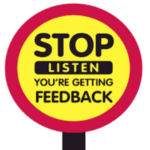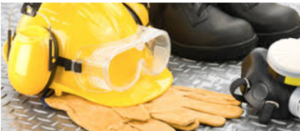Workers in the automotive industry are exposed to various hazards such as noise, chemicals, sharp objects, and heat. Wearing appropriate protective gear and protection can help prevent injuries and ensure their safety.
One example of such protection is dB Blocker hearing protection.
There are several types of noise associated with the Automotive Industry such as impulsive noise, continuous noise, intermittent noise and low-frequency noise. Long-term exposure to all of these can result in permanent damage to the human ear.
CPE’s dB Blockers allow interpersonal and radio communication to be clearly exchanged while keeping your workers protected. Protect your shop workers today.
Contact us to get your shop fitted

#automativeindustry #noise #workinnoise #hearingsafety #protectear #safety #communication






 Their goal is to remind people that hearing issues can be a health risk, Mahboubi said. “We would recommend that people who think they have at least some degree of hearing loss have it checked out by a doctor.”
Their goal is to remind people that hearing issues can be a health risk, Mahboubi said. “We would recommend that people who think they have at least some degree of hearing loss have it checked out by a doctor.”


 organizational environment, or economic hardships. Stress in the workplace is an ongoing trend that seems to impact employees and employers in all workplace settings.
organizational environment, or economic hardships. Stress in the workplace is an ongoing trend that seems to impact employees and employers in all workplace settings. frequently, utilizing innovations for capturing that feedback, and acting to drive engagement based on those results. In 2016 & 2017 more organizations implemented some sort of Employee Engagement program to capture the employee voice and concern through a series of quantitative surveys and continuous listening/pulse surveys and examining passive data for employee opinions and behaviors. As the workforce shifts from one generation to the next, we will see an increase in Employee Engagement and Feedback.
frequently, utilizing innovations for capturing that feedback, and acting to drive engagement based on those results. In 2016 & 2017 more organizations implemented some sort of Employee Engagement program to capture the employee voice and concern through a series of quantitative surveys and continuous listening/pulse surveys and examining passive data for employee opinions and behaviors. As the workforce shifts from one generation to the next, we will see an increase in Employee Engagement and Feedback. lasting implications for organizational culture and management. Millennials and later generations have reshaped the workplace in a multitude of ways and will continue to push boundaries and redefine expectations as they take on a more prominent role within organizations. Organizations may need to continue to redesign jobs and workspace to accommodate Millennials.
lasting implications for organizational culture and management. Millennials and later generations have reshaped the workplace in a multitude of ways and will continue to push boundaries and redefine expectations as they take on a more prominent role within organizations. Organizations may need to continue to redesign jobs and workspace to accommodate Millennials. Safety Engineer.
Safety Engineer.
